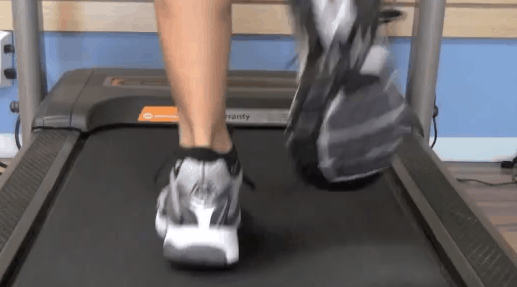Darrin DeTorres, gives tips on what to look for when seeking a great pair of running shoes.
Size Matters!
This could be the single most important factor regarding finding the right pair of running shoes. All to often I talk to people who complain about shin splints, plantars faciitis and black toenails. More often than not, wearing the right size shoes can cure most of these common running ailments.
How do I know if my running shoe is the right size?
When trying on a pair of shoes, they should be about ½ inch too long while standing. This added room allows for swelling that will occur while running. Do not worry about the number when searching for a running shoe, because I can guarantee 100% that the size will be bigger than what is worn in a dress or a casual shoe. Taking me for example; I wear a size 10 dress shoe but a size 11 running shoe.
Run before you Walk
If you are lucky enough to live in a city with a specialty-running store, go see them and insist they perform a running gait analysis. Running shoes are designed to fit people based on how they….Wait for it…….Run.
Some running stores like to watch runners walk and recommend shoes based off a walking pattern. If this happens to you, insist they watch you run on the treadmill. Below is some information that suggests that different things happen at different speeds. A neutral walker may over-pronate while running. (More on this in the next section)
While attending a running symposium in Boulder Colorado, I had the pleasure of listening to an expert panel that included some of the leading minds in running and injury prevention. The panel included:
Dr. Irene Davis – Director of the Spaulding National Running Center (Harvard Medical School)
Danny Dreyer – Founder of ChiRunning and ChiWalking
Dr. Mark Cucuzzella – Executive Director of the National Running Center
The panel suggested that the human gait is comprised of three different gait patterns that are meant for 3 different types of locomotion. Some running injuries are thought to be a result of utilizing the wrong gait pattern while running. Below are the three different patterns and when they are thought to be most beneficial.
Heel Strike – Walking
Midfoot Strike – Long Distance Running
Forefoot Strike – Sprinting
More information on Foot Strike Research
Understanding Pronation
One reason running stores perform a running gait analysis is to determine your level of pronation. Pronation is the foot’s tendency to roll slightly inward upon ground contact as a way to distribute impact forces. According to Runner’s World, a normal pronation consists of about a 15% inward roll. When on the treadmill, the person performing the gait analysis is looking for overpronation or under pronation, also known as supination.
A runner who is thought to overpronate will be recommended to wear shoes that offer support or stability. A stability shoe has a denser midsole to help control the rate of pronation. Runners who have issues with overpronation can supplement their training with barefoot drills and strength training in hopes of correcting any deficiencies that might contribute to overpronation.
A runner who is thought to supinate will be recommended to wear a flexible neutral shoe (One lacking stability features) with a decent amount of cushioning, in hopes of promoting pronation. Runners who supinate need to pay special attention to the surfaces they run on, as graded roads and cement can lead to ITB issues.
A runner with normal pronation will be recommended to wear neutral shoes………Now that was easy.
Other things to consider!
Orthotics
If it is not broken don’t fix it! I have become very disappointed by a Florida running store franchise that insists on putting every customer into into an orthotic of some type. I understand that the point of being in business is to make money, but not at the cost of a persons health or pocket book. I like to think of orthotics like athletic braces. Use them if necessary for pain relief and rehabilitation, but get out of them as soon as humanly possible.
Brands
When picking out a pair of shoes don’t get caught up on brand. Instead, choose the shoe that feels the best on your foot. Some of the best selling running shoes are virtually unheard of to the general population because they don’t have the marketing budgets of the likes of Nike or Adidas.
My favorite brands include; Mizuno, Newton, and Brooks!
Replace Often
The best quote I have ever heard in relation to replacing you running shoes is “ A pair of running shoes shouldn’t last to see a birthday” – Owen Shott. In fact, I generally recommend that with moderate use a runner should replace their shoes every 4-6 months. Even sooner for those who run 5-7 days a week.
Don’t Get Caught up in Price
A $150 shoe isn’t always better than a $100 shoe. The important thing is that the shoe fits correctly and is the right one for your gait pattern. If the $100 “Pinto” fits and feels better compared to the $150 “Ferrari”, then buy the Pinto!



